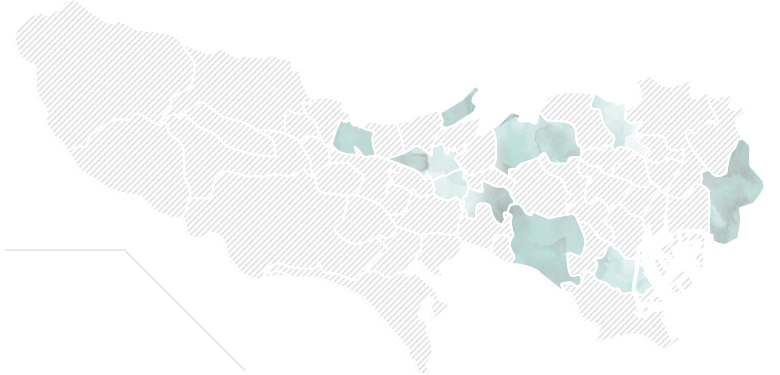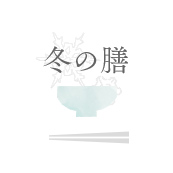-
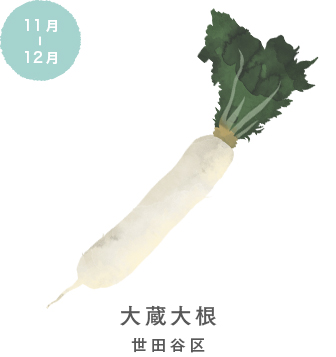
Japanese radishes have been a popular crop in the Setagaya area since the Edo era. Production was temporarily interrupted, but resumed in 1997. They have low water content and a strong sweet taste. They retain their shape even when boiled, making them great for stews.
-
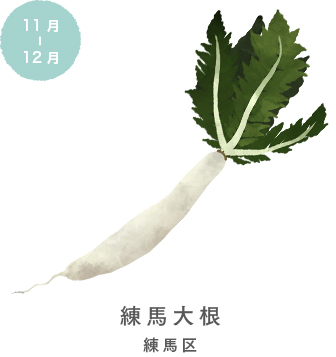
Nerima Japanese radish production began in what is now Nerima Ward during the Edo era, in the late 1600s, and became a fixture during the early 1700s. They are great for making takuan, and because of their hot taste they are also used in grated Japanese radish.
-

Beta carrots are a cultivar registered as a new brand in the Kiyose area in 2009. They have little of the strong smell characteristic of carrots, and have a fresh sweetness. They can be eaten in a variety of ways — raw, juiced, in stir fries, and the like.
-
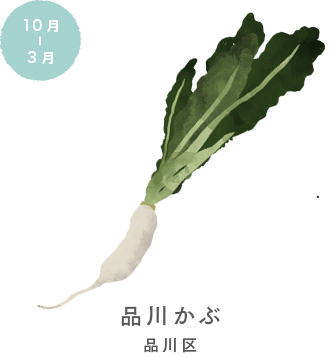
Shinagawa turnips are a type of long turnip, resembling the Japanese radish, grown in the Shinagawa area since the Edo era. Competitive Shinagawa turnip fairs have been held since 2012 as part of dietary education efforts. They have little grassy taste or bitterness, so they are used in a wide range of dishes.
-
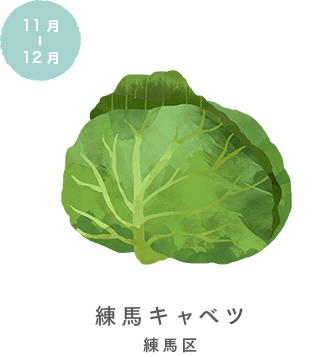
Farming of Nerima cabbage began after WWII in order to replace Nerima Japanese radish, which was struck by crop blights. Nerima Ward is now the largest producer of cabbage in Tokyo. Nerima cabbage is light and sweet.
-
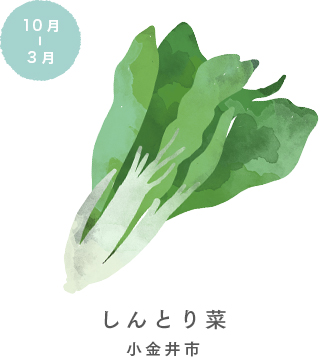
Shintori green farming began in Edogawa Ward from roughly 1965, but the conversion of the area into a residential area led to a reduction in crop volume. In recent years shintori greens have also started being farmed in Koganei City. They are harvested early, and their stems are eaten, leading to their name, “shintori”, which means “taking the stem”.
-
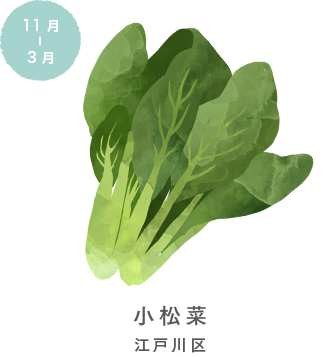
Japanese mustard spinach (“komatsuna”) was named during the Edo era by Yoshimune Tokugawa, the eighth shogun. Even now there are many greenhouses in Edogawa Ward which grow it, and the ward boasts the largest level of Japanese mustard spinach production in Japan. Morning frosts during the winter make it even sweeter and more delicious.
-
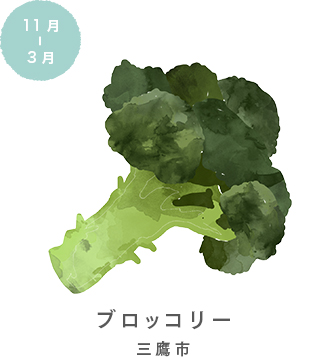
In 1957 the Mitaka City Western Vegetable Research Society was established, and broccoli production began. Broccoli is rich in carotene, vitamin C, vitamin E, calcium, iron, and dietary fiber.
-
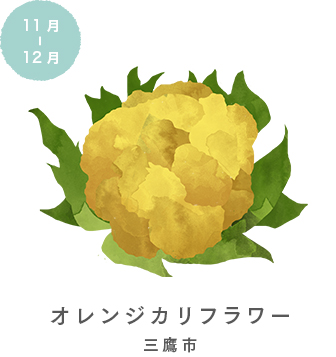
Orange cauliflower production began in Mitaka City in 1955, and years of production technology advances have led to the shipping of extremely high quality cauliflower. Orange cauliflower has twenty times the vitamin A content of regular cauliflower.
-
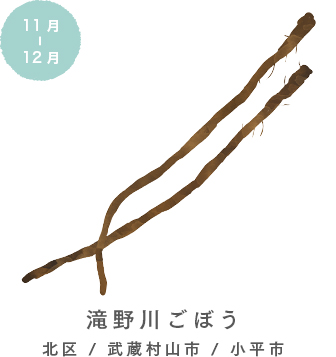
Takinogawa burdock is the result of growing and improving cultivars of burdock during the Edo era, in the late 1600s, in what is now the Takinogawa area in the Kita Ward. They stand apart due to their large size, reaching from 80cm to 1 meter in length. They have a soft texture, without the stringiness found in other burdock.
-
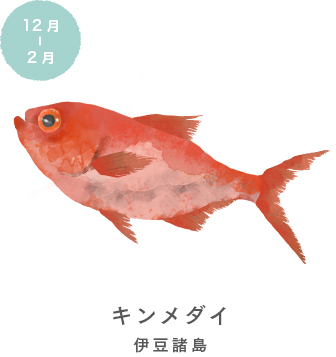
The fatty alfonsino caught in the sea between Izu Oshima and the Izu Peninsula are called “jikinme”. Jikinme are high-grade fish. They taste delicious as sashimi, in stews, and in shabu-shabu.
-
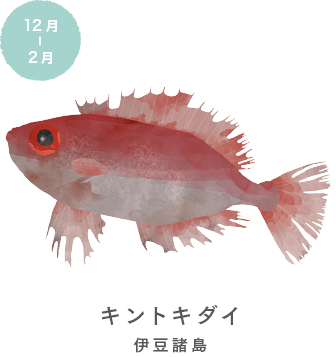
Red bigeyes are caught around the Izu island chain. Their Japanese name, Kintoki-dai, comes from their resemblance to the red armor worn by Heian-era samurai Sakata No Kintoki. They have firm, delicious white flesh, and can be eaten as sashimi or in dishes such as stews.
-
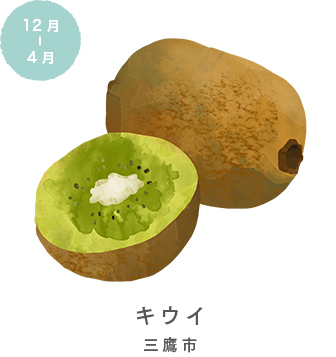
Kiwi production in Tokyo began in 1978. The climate and soil of Mitaka is identical to that of Rotorua, New Zealand, the world’s largest producer of kiwis. Almost 40 farmers now grow kiwis, which are also used in jams and wines.











